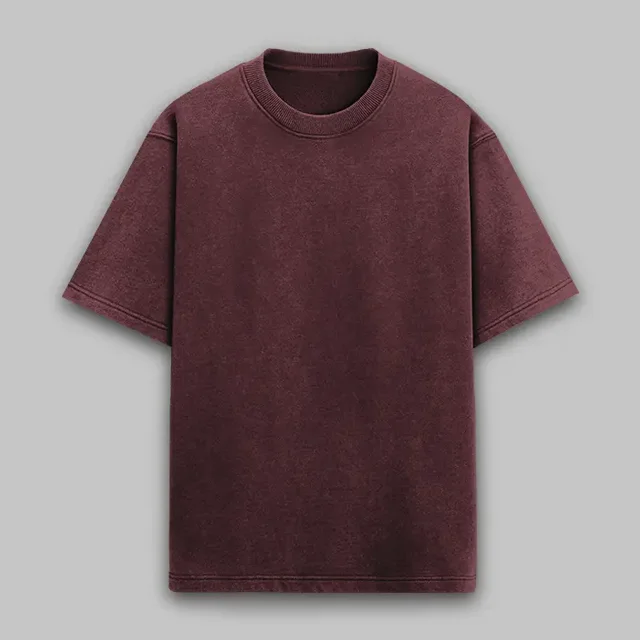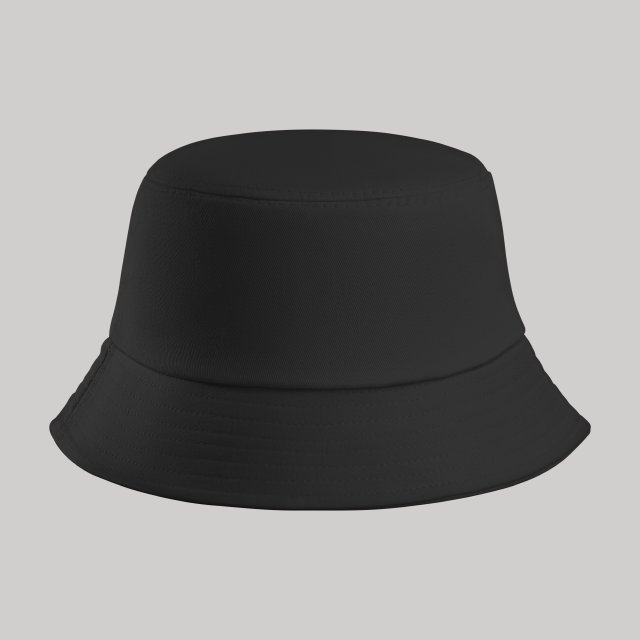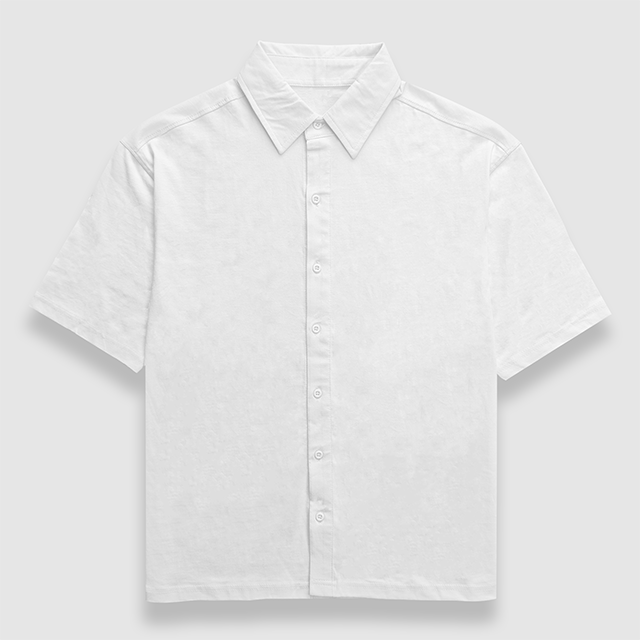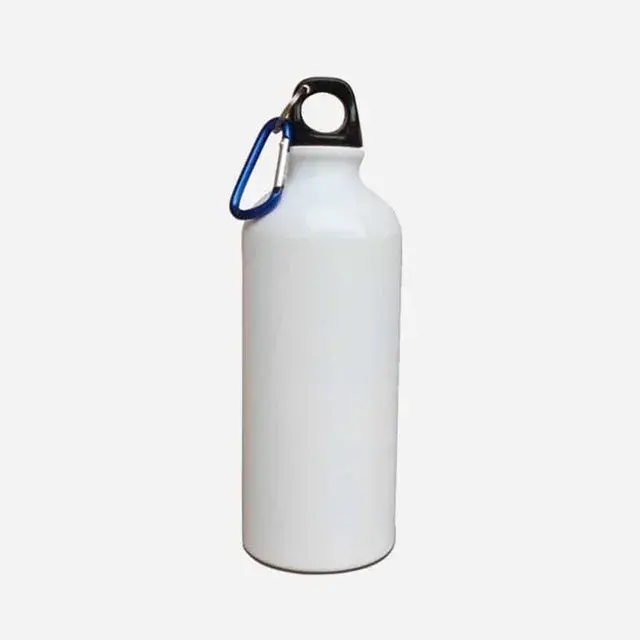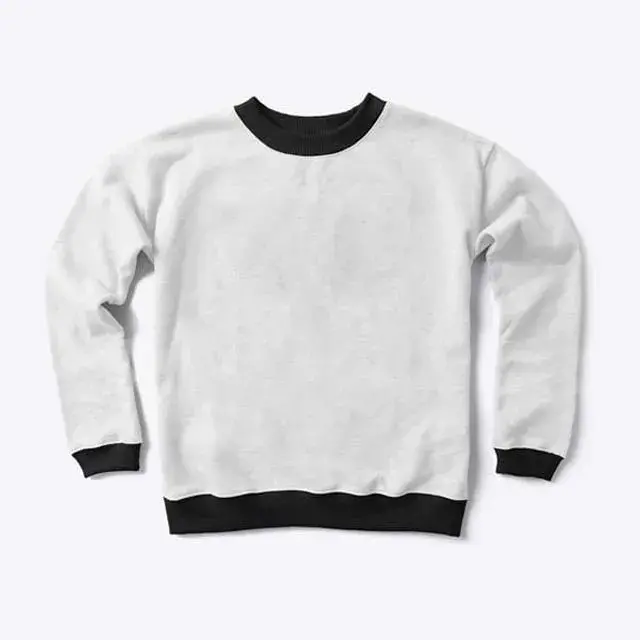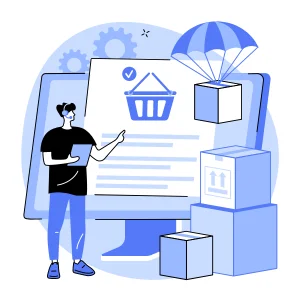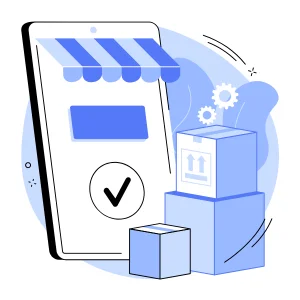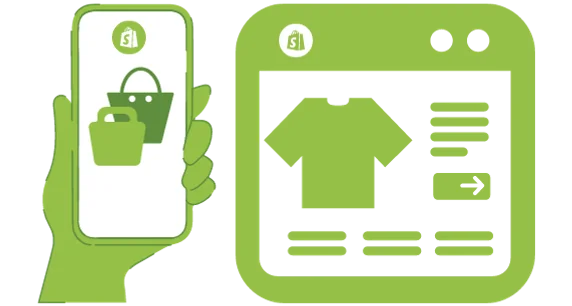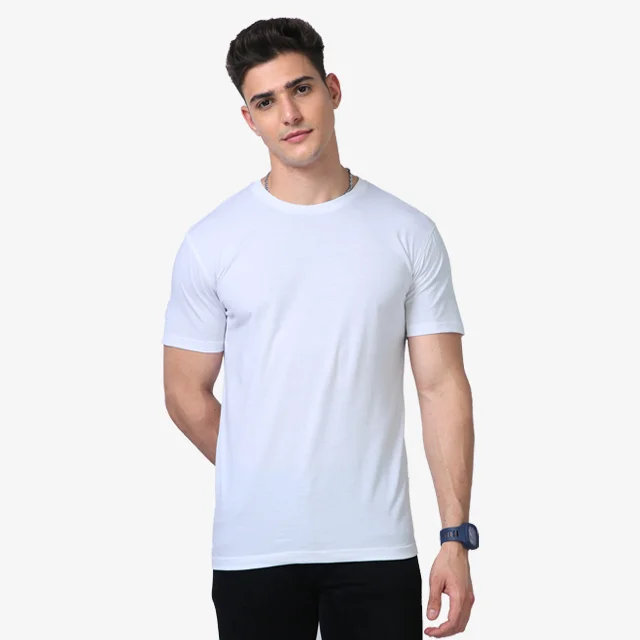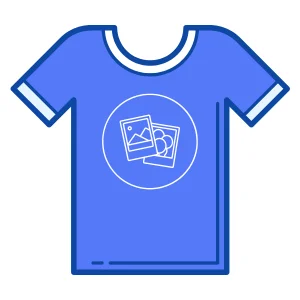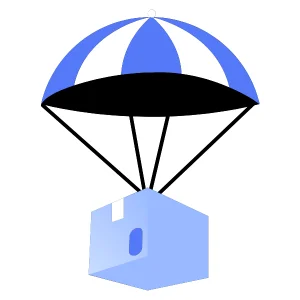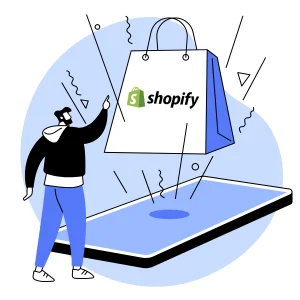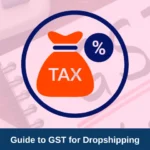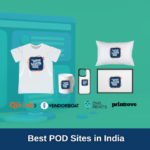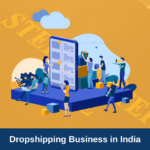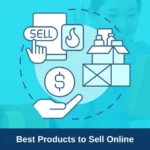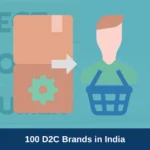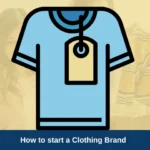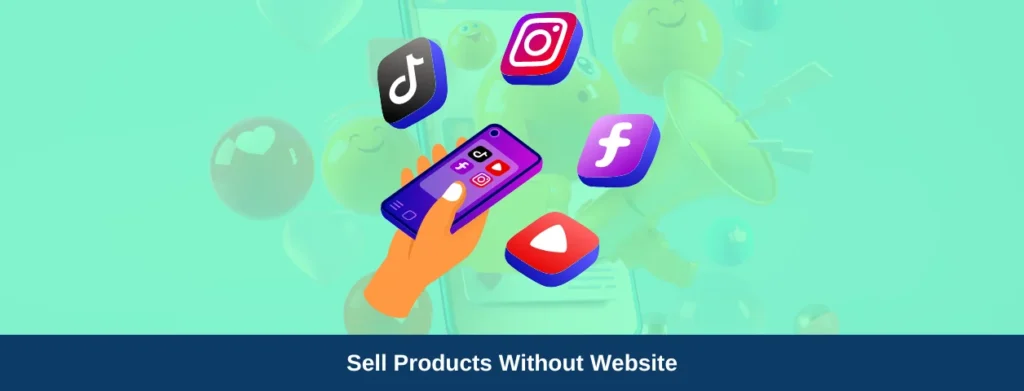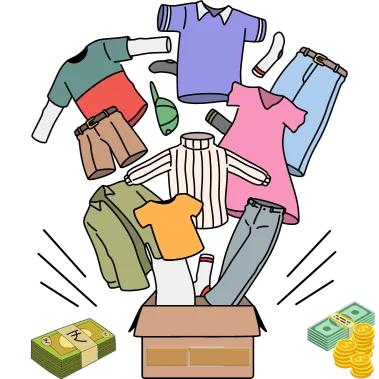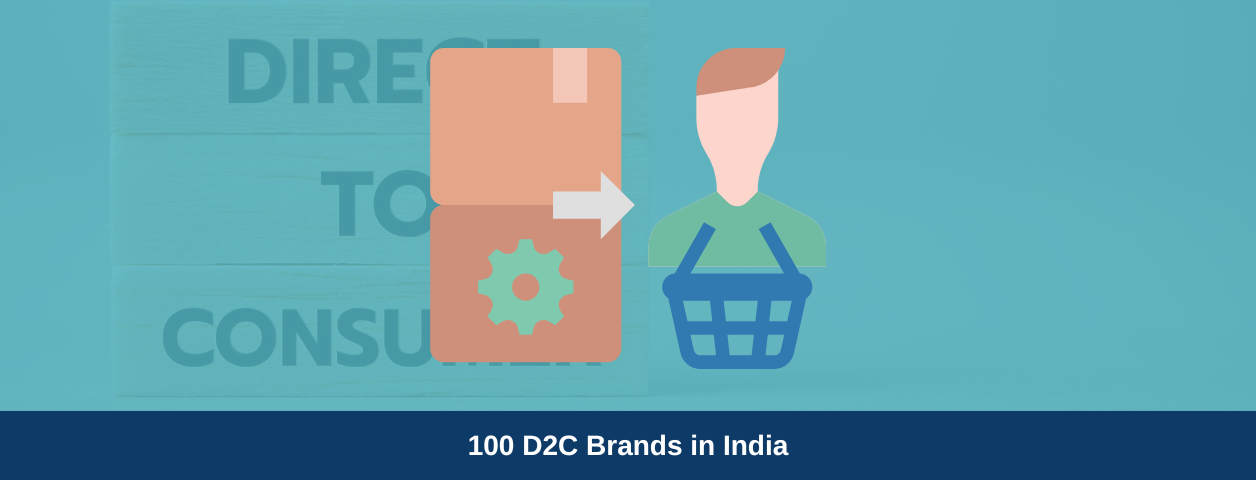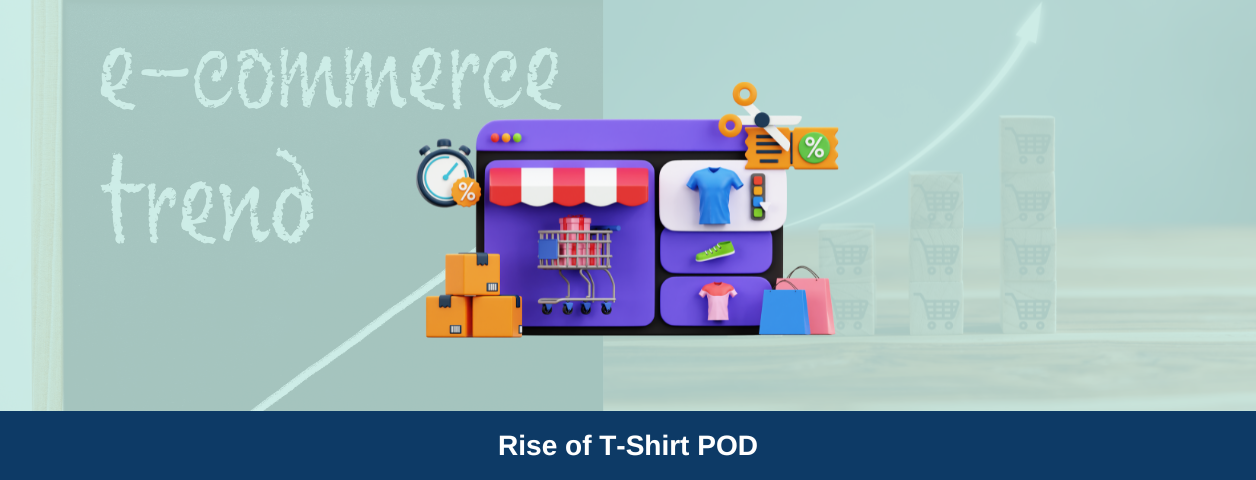Proper planning and skills can make selling products online without a website profitable.
With growing e-commerce businesses, it’s always best to stay on top by spreading your brand’s awareness using multiple platforms. However, having an e-commerce website is not mandatory when you start a new business but a thought to consider once you reach a certain level in your industry.
In this article, we will see all the possible ways to sell online, along with the advantages and disadvantages of each platform. So keep reading till the end.
Before we get started, let’s see if we can sell products online without a website.
Can you sell products online without a website?
Planning a new business sounds exciting, but the processes and investment involved may put you in several doubts even before you launch your business.
With internet access, reaching out to your target customers is easy. But is selling products online without a website possible?
Of course, yes. Modern-age businesses no longer need a hefty investment or go through elongated procedures. With just a laptop, access to a camera and the internet, you can start a profitable business from anywhere in the world.
There are many platforms in the market to sell products online without a website. But choosing the right one for your business is a crucial task. It would help if you considered the following:
- What is your product?
- How is your product solving the problem or creating a demand?
- Who is the target audience for your products?
- Where is your audience located?
- Which platforms do your target audience use the most?
- What is the age group of your target audience?
- What kind of content can you create to attract your target audience?
- In what ways can you promote your product to reach your customer?
- What are the pros and cons of the platform you will use to sell your products?
The above questions must have solid research as this is the foundation of your online journey. It may help you sell products online without a website profitably.
How to sell digital products without a website?
You can sell products online in three ways using the internet. They are:
- Dropshipping
- Print on demand
- Bulk purchasing and selling is also known as traditional business.
Let’s quickly understand how each of the above works.
Dropshipping helps you sell online without having any inventory. Here is how it works:
- Your dropshippers own products that you can sell online (Eg: printed t-shirts)
- You list those t-shirts on any platform that you wish to sell on.
- You promote your products to your audience and get orders from them.
- Once a customer places an order with you, you send the order details to your dropshipping partner.
- The dropshipping partner then picks, packs and ships your orders to your customers directly under your brand name.
Pros of Dropshipping | Cons of Dropshipping |
Easy to set up. It does not require any prior investment to purchase products. | Low-profit margins since you don’t manufacture the products. |
No storage or upfront set-up fee. It is entirely free and legal to start. Also, you don’t need to worry about storing products or having any labour to manage inventory | Huge competition as many businesses are opting for a dropshipping business model. |
You only pay the dropshipper when you receive an order from your customer. | No control over the products shipped. You are responsible for the products shipped by your dropshipper |
Low risk as you don’t hold any inventory. | You cannot build a brand with dropshipping as they have white-labelled products and common brands or designs. |
Flexible: Easy to find best-selling products and remove products that don’t sell. | Long shipping time and product availability due to high demand |
You can work from anywhere in the world. It is also a great side hustle. |
2. Print-on-demand - sell customisable products without inventory
Print-on-demand follows a similar business model as dropshipping, but here’s what it offers:
Customisable products with your designs and your brand name.
Print-on-demand enabled you to start your brand with your designs on the products. Here’s how it works:
- You create or source your designs.
- Your print-on-demand provider owns blank products, and you can add designs on them (Eg: plain t-shirts + your design)
- You create your designed product mockups and list those t-shirts on any platform you wish to sell on.
- You promote your products to your audience and get orders from them.
- Once a customer places an order with you, you send the order details to your print-on-demand partner.
- The print-on-demand partner then prints, packs and ships your orders to your customers under your brand name.
Pros of Print on Demand | Con’s of Print on Demand |
Easy to set up. It does not require any prior investment to purchase products. | Low-profit margins since you don’t manufacture the products. |
No storage or upfront set-up fee. It is entirely free and legal to start. Also, you don’t need to worry about storing products or having any labour to manage inventory | Huge competition but it can be profitable with unique designs |
You only pay the print-on-demand when you receive an order from your customer. It is sustainable as the print-on-demand provider prints products only when you ask them to. | No control over the products shipped. You are responsible for the products shipped by your print-on-demand supplier |
Low risk as you don’t hold any inventory. | Risk of returns may stock up inventory. |
Flexible: Easy to find best-selling products and remove products that don’t sell. | Long shipping time and product availability due to high demand |
You can start your brand of products by using custom branding services. | |
You can work from anywhere in the world. It is also a great side hustle. |
3. Bulk purchasing and selling
In this traditional business model, you stock bulk products from manufacturers or wholesalers. You fulfil the orders manually for your customers.
Here’s how it works:
- You source products in bulk
- Rent a space to stock up on inventory
- Take product pictures and list them online
- Promote your products online and collect orders from customers
- Pick products, pack them and ship them to your customers.
- Manage return inventory or damaged products.
How to sell products online without a website?

Your Facebook page acts as an online store. You need a business page to start. However, you can only sell physical products on Facebook.
Facebook Marketplace is a digital marketplace, and users can buy, sell, and trade products with individuals. You may list practically any item on the site using the Facebook app or by visiting the platform through a computer browser.
Individuals purchase and sell things on the marketplace. At the same time, e-commerce enterprises and storefronts utilise it to promote current inventory and increase visitors. Learn about the benefits and drawbacks of using Facebook Marketplace and how much it will cost.
Here’s how to set up a Facebook Shop,
While setting up your Facebook shop, you must add information about how your customer will complete a purchase. Will it be direct to your website (if any), on Facebook or Messenger?
Since we do not have a website, you must select Messenger as a checkout option. Your customers can directly message you and pay through your available payment options.
Note: You need a payment gateway to collect payments from your customer.
Facebook selling tips
Setting up a way to sell is just the beginning. Now you need to find out how to sell things on Facebook without a website.
Add business info
Even if your online storefront is on social media, customers expect detailed business information, just like when they shop on a website. Include a clear “About Us” section, business contacts, and current payment and delivery information.
Create collections of products
Quality product pictures and descriptions are essential, but you can take them further by creating collections for your products. Collections are items in your Facebook shop that are grouped by category. For example, “Clothes,” “Shoes,” and “Accessories.”
Pros and cons of selling products on Facebook
Pros
1. It is free and straightforward to set up a Facebook shop
Facebook Shops are available to qualified companies worldwide, and the setup process is straightforward, quick, and accessible. If you have a Facebook business account, import existing product collections from your company’s e-commerce site or create new collections using Commerce Manager. When you’re through customising your shop layout, it’s time to publish it.
2. Checkout procedure adaptability
Suppose you’re concerned about disturbing website traffic by creating your Shop. In that case, you may send clients to your e-commerce site to complete a transaction. Using the “Check Out on Another Website” option when creating your store, your tagged items will now send customers to an external site of your choosing.
3. Direct contact with buyers
Facebook Shops lets your consumers contact you via Messenger, WhatsApp, or Instagram Direct with queries about specific items or tracking information. It enables your clients to place an order with your Shops business confidently.
4. Advertising ease
Every day, billions of Facebook users look across their feeds. Simultaneously, approximately 6 million advertisers strive to capture their attention with the proper items and imagery. Advertising your items on worldwide social networking sites may broaden your reach, especially if you can fully customise your product selection and Shop layout.
5. Easy shipping procedure
Suppose you enable consumers to checkout straight from the Facebook app. In that case, Shops allows you to use any shipping provider you choose if it delivers tracking and delivery confirmation. Details such as shipment handling time, price, speed, and destination are adjustable and editable under your Shipping Profile in Commerce Manager.
Con's
1. Requirements for selling via Facebook shops
Your business must satisfy to provide a personalised shopping experience for your clients via Facebook Shops. Your Facebook business page must have at least 2,000 insights, and your items must be physical. Facebook Shops cannot sell digital services, goods, or subscriptions.
2. There is a commission on sales
There is a minor cost for using Commerce Manager to sell things through the Facebook app. On all sales over $8.00, Facebook deducts a 5% selling charge for each shipping. Facebook automatically collects a fixed amount of $0.40 when a sale is completed for shipments of $8.00 or less.
3. Inability to add new features
Although Facebook Shops allows you to customise your product collection and style your general layout, you cannot include additional features such as promotional codes or referral programmes. Facebook has a global licence to host your Shop, which prevents you from making any substantial tweaks or changes to the app’s functionality.
4. You exclude clients who do not have a Facebook account
Statista claimed in June that there are 2.6 billion Facebook users worldwide. While this is a colossal number of connected people, it represents just 33% of the world population.
For example, Facebook Shops might assist or hinder sales depending on your target market Gen Z. Consider how your consumers typically obtain information about your items and if Facebook Shops might attract or repel your loyal client base.
5. Negative feedback
Using Facebook Shops exposes your business to many comments and reviews, some of which may not be pleasant. Marketing your products on social media enhances the probability of your customers connecting with your company. While favourable reviews help you reach a wider audience, poor reviews can hamper your advertising efforts and leave you with the difficult work of damage repair.

The most popular Twitter accounts include those of news organisations, politicians, musicians, and singers. On the other hand, companies on Instagram may mimic the posts that consumers see from the people they follow to reach their followers’ newsfeeds.
Businesses that invest in targeted marketing, sponsored partnerships, or high-quality organic postings will be successful on Instagram.
Pros and cons of selling products on Instagram
Pros
Insights from Instagram
Analytic data are beneficial to all organisations, including your Instagram account.
You’ll have access to Instagram Insights with your Instagram Business account, where you’ll be able to see things like
- audience demographics
- audience behaviour
- analytics for your posts
- analytics for your stories
Using analytics to drive your Instagram strategy will assist you in growing your account and creating material that your audience desires.
Contact methods
Another advantage of having an Instagram Business account is that you can instantly add contact option buttons to your Instagram profile.
You may make it extremely simple for your audience to contact you through phone, email, or your physical address.
People who select “Contact” on your profile will see the options you have specified for contact information. Your follower can next select the method they want to use to contact you:
Instagram snapshot showing a clickable phone number and email address
Ads
Paying for Instagram advertisements or boosting an Instagram post might assist you in growing your account and increasing sales.
You may generate advertising from within the app using your Instagram Business account.
Swipe right
Currently, the only place on Instagram where you may include a clickable link is in your bio.
It does not change anytime soon.
Instagram wants users to stay on its site. However, accounts with over 10,000 followers can post a link to their Instagram Stories.
Quick responses
Get a lot of Direct Messages on the same topic. You may create Quick Replies, essentially pre-written messages you can access with a shortcut word.
Instagram is all about photographs
Instagram has made it extremely simple to upload photos and videos directly from your smartphone. Posts of photographs made by the user on Instagram will remain on the site indefinitely unless the user deletes the post.
Only some businesses would choose to create their advertisements just with photographs.
Instagram effectively reaches your target audience
Instagram has emerged as the most rapidly developing social network. Its platform has over 800 million monthly active users and over 40 billion photos posted.
It has a significant number of active users, and its members currently upload over 95 million photographs every day. Every day, around 4.2 billion likes are given to uploaded pictures.
Because the number of audiences on Facebook and Instagram is nearly equal, people who want to see your advertising.
Instagram offers a high rate of engagement
Instagram’s ever-increasing number of active users may provide great engagement rates. Instagram has the most engaged members of any social networking site.
This engagement rate is around 70% greater than that of Facebook, and the follower growth rate is approximately 9% higher than that of Twitter, which is about 0.11%.
People may like and comment just as they do on Facebook. Since its acquisition by Facebook, Instagram has been inspected and acknowledged by the Facebook team. There are several options available to assist you in increasing account engagement.
Instagram makes it simple to share your content
Because Instagram was explicitly designed for smartphones, you can share your material anytime and anywhere with an Internet connection.
Of course, various providers may give you additional perks with their plans, so investigating packages comparable to what this internet service can provide should be in your best interest before exploring how Instagram might assist your business.
Your Instagram posts may also be displayed on your other social media platforms. Connect your social networking accounts to Facebook, Twitter, or Tumblr to do this.
Like other social networking networks, you may quickly post and monitor your material.
Instagram gives your company a visual representation
Instagram is one of the most significant visual brand or business marketing channels.
You may share eye-catching images of your items to enhance sales. People interact better with material that includes visual images rather than simple text.
However, you should not limit yourself to only taking excellent photos. Your Instagram post should also make good use of the description area. And postings with an engaging description and a relevant hashtag drive higher engagement.
Creating aesthetically appealing ad representations helps your audience connect effortlessly with you and your products.
Instagram allows you to reply faster
You must be active in your category or speciality if you are in charge of marketing for your firm.
You must respond to both your audience’s messages and their comments. Because Instagram is designed solely for smartphones, you may immediately react to these messages and comments. Your words and opinions must engage your target audience in a two-way conversation. Consequently, your target market is likelier to believe in your products and services.
Responding to and interacting with your target audience as a company owner has always been challenging.
“Writing personalised messages to your followers can significantly increase brand recognition and customer trust,” says Dorian Martin, an editor and senior content writer for Essays Supply.
Instagram can quickly boost your reach
Unless you delete your Instagram posts, they will stay on the network indefinitely. That is why your previous content might still generate interaction. However, if you want this to happen, you must utilise hashtags carefully.
All of your Instagram posts may help you grow your audience. Just make sure your postings are targeted and visible to your intended audience.
When utilised correctly, hashtags help you expand the reach of your posts by a factor of ten. Unlike Twitter, you may use many more hashtags in your Instagram posts.
The level of reach that you can use as a business is comparable to that of Facebook. Tight monitoring is also feasible, and your strategy may be readily tailored for improved outcomes.

Cons
The most significant advantage can turn into a disadvantage
Its disadvantage is Instagram’s most important benefit: it primarily relies on photographs. That implies you must use extreme caution while posting pictures on Instagram. Because it will entice people to follow you.
To be successful, Instagram photographs must be square in size. When utilising nonsquare pictures, elements of the image will only appear in some of the news feeds. Your message or trademark may appear jumbled since not all words are visible.
It limits the dimensions and sizes of pictures that can be submitted. There is little you can do to promote in a small region.
Limitations on your content
You are not permitted to expound on the product in your Instagram post. Only movies under 60 seconds in length are allowed to be posted. Furthermore, Instagram captions should be between 138 and 150 characters extended. Any advertisement is limited to 125 characters.
Limit yourself to 5 to 10 hashtags if you wish to use several. Using too many hashtags might lead to your account being banned.
Advertisements on Instagram are generally square in design. You can’t do much with your advertisements or images.
Instagram postings do not support clickable links
Instagram captions should be at most 150 characters long.
You cannot include links in your caption since they will not be clickable.
You should not leave a link to another website on Instagram and expect your followers to copy and paste it into their browsers.
It is too much work for people who can navigate through their news feed and double-tap on a post they like.
Instead of a link, think of a creative method to encourage people to your website. You may also put a link to your website in the bio area of your profile.
There are also no clickable links available in Instagram advertising.
Advertising is more challenging
Targeting local markets on Instagram is more complex than on Facebook or Twitter. Instagram offers fewer options for restricting your target audience. In addition, you must rely solely on organic traffic. Huge companies can only afford this platform. The average CPC on Instagram goes from $0.50 to $1.00.
Amazon, eBay, and Etsy are all online goods advertising platforms. Each platform attracts millions of monthly visitors looking for things to buy.
Many buyers have already pre-registered their payment cards and mailing addresses.
Because they have name recognition, consumers trust them; these marketplaces function incredibly well for small company owners like you who want to sell online without a website.
The first marketplace option is a platform with 300 million daily users and 66,000 orders sent every day in the United States alone. Amazon, indeed.
Sell on Amazon
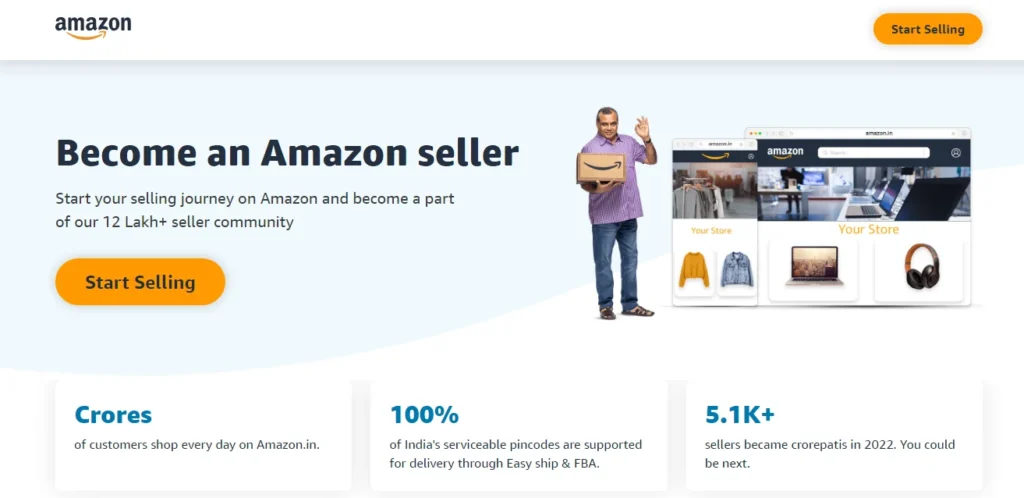
Amazon is ideal for firms selling several pieces of the same product.
Listings are adverts that include a photograph of your goods, a description, and other people’s comments and reviews.
Amazon listings are effective in generating big numbers of single product sales because the more sales you make, the more reviews you’re likely to acquire and the higher you’ll rise in the page rankings.
It translates into exceptional commercial real estate in your town or city.
How to create an Amazon account?
Amazon recognises that many sellers need to be more technically competent. Therefore, they give thorough instructions at every stage of the process.
Head to the “How to start selling on Amazon” page, where you’ll discover how to form an account, create your product listing, and attract buyers.
When you’ve finished reading, you’ll see an orange button that says “sign up”; click it.
What is the cost of selling on Amazon?
Amazon has an individual plan that charges $0.99 for every product sold. In addition, regardless of how many things you sell, a professional plan costs $39.99 monthly.
Consider thinking large and employing a professional strategy.
How to use Amazon to ship products?
You may ship things yourself or send them to Amazon, who will store and dispatch them for you; this is known as FBA or fulfilment by Amazon.
Your next alternative may have a different sales volume than Amazon, but it may be your ideal answer. Let me explain why:
Sell on eBay
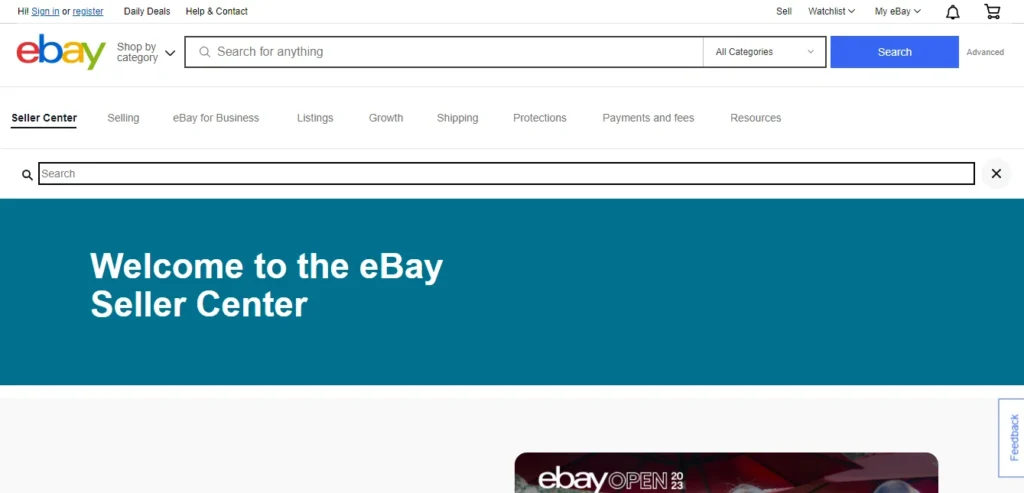
eBay is ideal for businesses that sell a massive volume of a single product or a range of things.
As an example:
You may also sell significant numbers of the same items, making it a top-rated sales channel for people looking to sell things online without having their website.
To begin selling on eBay, you only need an email account and a payment option that buyers may use to purchase your items, such as PayPal, a credit or debit card, or Apple or Google Pay.
However, eBay offers something that Amazon does not: an online store!
Unlike Amazon, where you must make a separate listing for each item, eBay allows you to market all your merchandise from a single page.
eBay shop is an excellent tactic for anybody new to e-commerce since you can utilise personalised branding to stand out from the crowd, and they will also take you through the entire process.
What is the cost of selling on eBay?
You can list up to 250 products each month for free; beyond that, there is a $0.35 insertion charge per listing.
If your item sells, eBay keeps 12.55% of the sale price plus a $0.30 per order charge.
eBay also provides a variety of shop memberships and incentives, which reduce sales expenses for individuals who sell many items.
How to ship items using eBay?
You are responsible for shipping your things on eBay. eBay, on the other hand, collaborates with UPS, the US Postal Service, and FedEx. You may use them to add shipping fees to your eBay listings and print mailing labels directly from your computer.
But what if you offer both handcrafted and professionally purchased arts and crafts?
The following marketing platform is well-liked worldwide and offers a fantastic option to sell your things online without a website.
Let’s take a closer look and learn more.
Sell on Etsy
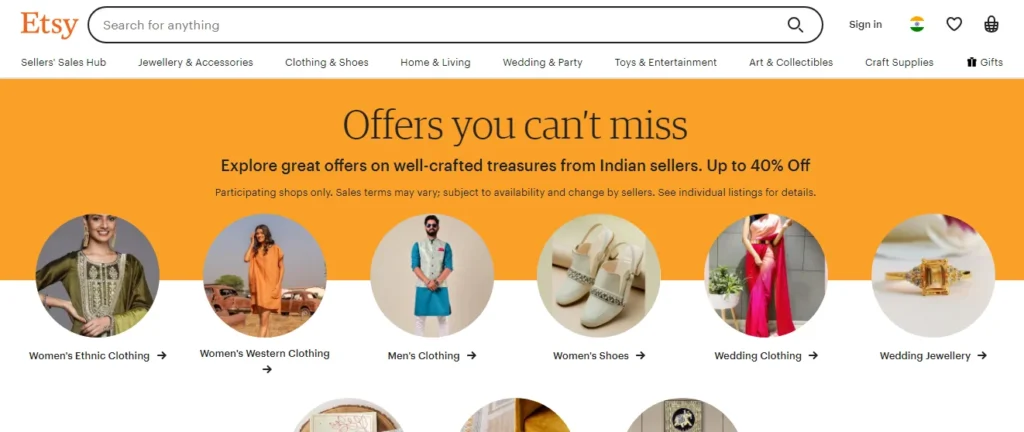
Etsy is the most popular e-commerce network for selling craft materials, creative goods, and vintage things not often seen in a standard online store.
It’s a hybrid platform that combines an art fair’s approach with a commercial marketplace like eBay.
It’s also the ideal online marketplace for full-time or part-time business owners who want to reach a larger audience without constructing a website.
How to create an Esty account?
It is simple to set up an Etsy shop. Go to Etsy.com, fill out the signup form, and establish an account with your email address.
Then, check your mailbox for a confirmation email from [email protected] and proceed as directed.
How Etsy product listings functions?
Etsy is distinct from Amazon and eBay in that a single listing can include many things.
Let me explain:
Assume you offer a single item, such as hats in numerous colours. You may market your whole variety on Etsy under a single product listing. Customers can select the colour they like.
What is the cost of selling on Etsy?
Setting up an Etsy account and listing an item costs $0.20. Etsy imposes a 5% transaction fee on the sale amount after your item sells.
Etsy shipping works in the same way as eBay shipping. You may print mailing labels from your computer and utilise their linked shipping agencies (USPS, FedEx, or Canada Post).
Congratulations! You’ve just learnt how to sell your product or service online without a website to a combined audience of almost 3 billion monthly visitors.
Conclusion
So you now know that each platform has pros and cons. To satisfy your targeted marketing goals, you must exercise caution when selecting a platform for marketing reasons. If you found this post helpful, please read our other articles.
Retailers may sell online in three ways without building their website. These include online marketplaces like Amazon and eBay, social networking platforms like Facebook, and becoming a wholesaler and selling items to retailers with an online presence.
Follow the procedures outlined in this post to begin selling online using any of these techniques. Selling online without a website costs minimal Money and takes little time to get up. So, design your strategy, analyse eCommerce trends, select a technique, set up a store, and increase your company’s sales immediately.
Read more
- 10 Best Print-on-Demand Products to Sell
- Exploring Amazon Merch On Demand: Turning Creativity into Profit on the World’s Largest Marketplace
- How To Sell On Etsy India – A Guide From Setup To Sales 2023
- How To Sell On Amazon India – Step-By-Step Guide With Winning Tips
- How to Sell Print-On-Demand Products on Amazon
Frequently Asked Questions
What are the advantages of selling on social media?
- Geographical limitations are no longer an issue for a global audience.
- Open 24 hours a day, seven days a week – Your store is always open, even while sleeping.
- Low investment- Domains and hosting options have no recurring costs, and some listings are free.
Why is Instagram the ideal business social media platform?
Instagram may be the best social media tool since it allows potential customers to communicate with your brand naturally. Facebook’s efforts to connect friends and relatives have been redirected.
The most popular Twitter accounts include those of news organisations, politicians, musicians, and singers. On the other hand, companies on Instagram may mimic the posts that consumers see from the people they follow to reach their followers’ newsfeeds.
Businesses that invest in targeted marketing, sponsored partnerships, or high-quality organic postings will be successful on Instagram.
Is it possible to sell things online without having a website?
It’s natural to believe that if you want to sell things online, you’ll need a website and an online store. But do you need a website?
Depending on what you’re selling and in what volume, you have numerous alternatives other than running an eCommerce store from your website, such as leveraging marketplaces like eBay, Amazon, and Etsy or social networking platforms like Facebook or Instagram.
- Consider the following factors when evaluating whether or not you need a website:
- What are the fees for the other platforms, and how do they compare to the costs of establishing and operating an eCommerce website?
- How much time can you devote to internet selling? A website is more interactive, but it is also more customisable to your needs.
- Do you have a high-volume operation? Marketplaces are an excellent area to contact potential buyers if your product has significant search traffic.
Of course, there are several options for selling online. Even though you start selling online with a website, you can eventually go from social media or a marketplace to a website. In the long run, a website will aid in developing your brand. However, selling without a website will help you attract new clients and raise revenue soon.
Can you outline methods for selling products online without a website?
You an sell products online on
- Instagram,
- Marketplaces like Amazon, Etsy, and eBay
How can I practice dropshipping without the need for a website?
You can sell products on social media and the marketplace using dropshipping without a website. You can get orders on these platforms and fulfil them using dropshipping.
What are effective strategies to showcase and market products without a traditional website?
Creating a lot of content and staying consistent with the content and storytelling strategies will help you reach a wider audience. Social media and Google ads are great ways to promote your products.
Are there platforms or alternatives to websites for online product sales?
You can sell on social media platforms like Instagram, Facebook and Tiktok. Marketplaces like Amazon, eBay and Etsy are suitable platforms for selling your products online.
Can you provide examples of successful online sellers who use methods other than websites?
Hundreds of thousands of sellers on Amazon are running a profitable business. New brands are launched every day on social media platforms and later converted to websites.
With over 6+ years of experience in the industry, Ayushi excels in building strong customer relationships and guiding clients toward growth as a Brand Partnership Manager. She enjoys sharing her experience in her content.

